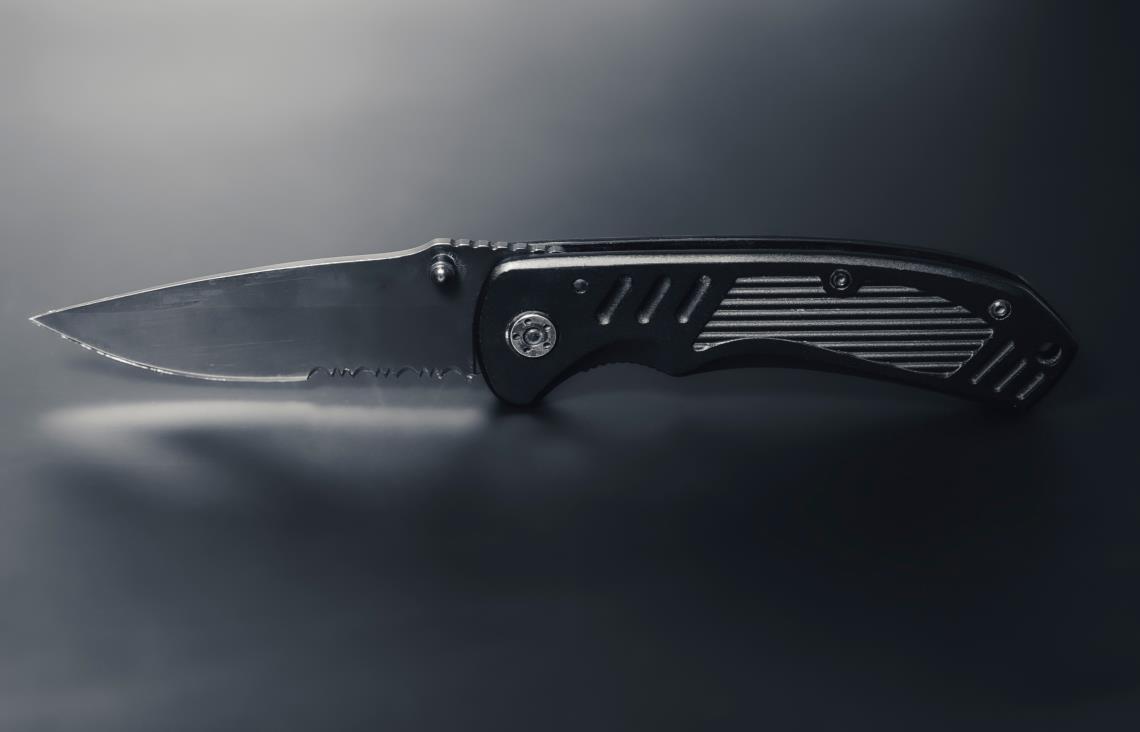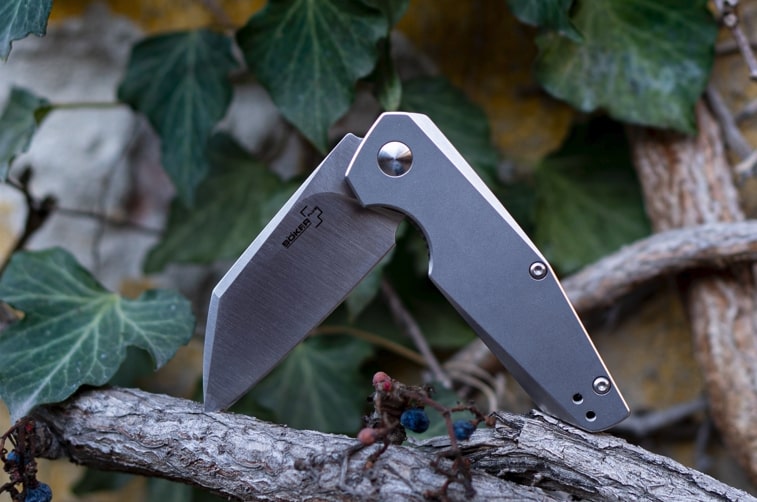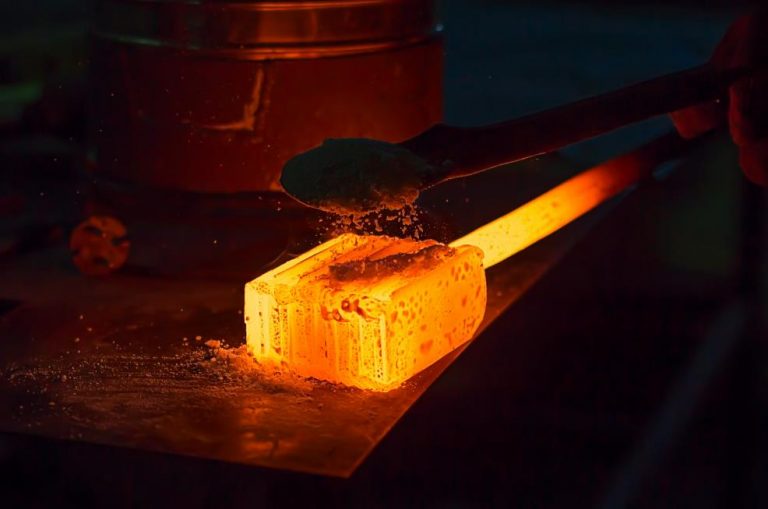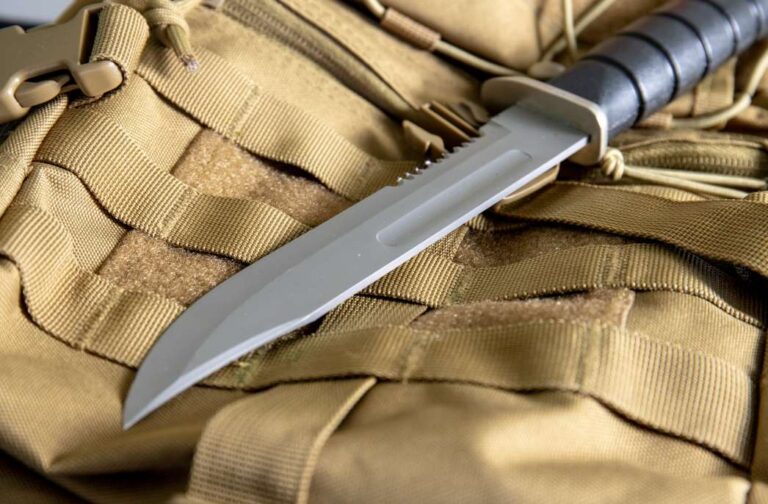Micarta, developed in the early 20th century, is a composite material made from layers of fabric saturated in thermosetting resin. On the other hand, G10 is a high-pressure fiberglass composite produced by layering continuous glass cloth soaked in epoxy resin and then subjecting it to heat and pressure. Both materials are considered phenolic laminates and are popular knife handle materials among customers. They share respective similarities and unique differences.
Performance, durability, appearance, and price are some of the key factors to weigh when choosing between Micarta and G10 for your knife handle. Weighing the pros and cons of each material will ensure that you find the perfect fit for your needs. Dive further into the article and learn all about those two popular knife handle materials!
Properties of Micarta
Micarta is a brand name for a composite material made by layering paper, fabric, or other materials with a phenolic resin. The combination of the resin and the layers creates a strong and durable material. It is commonly utilized in knife handles because of its excellent grip, even when wet. Although Micarta requires regular maintenance to maintain its appearance, its toughness and ability to absorb oils from the hands make it a reliable material for long-term use.
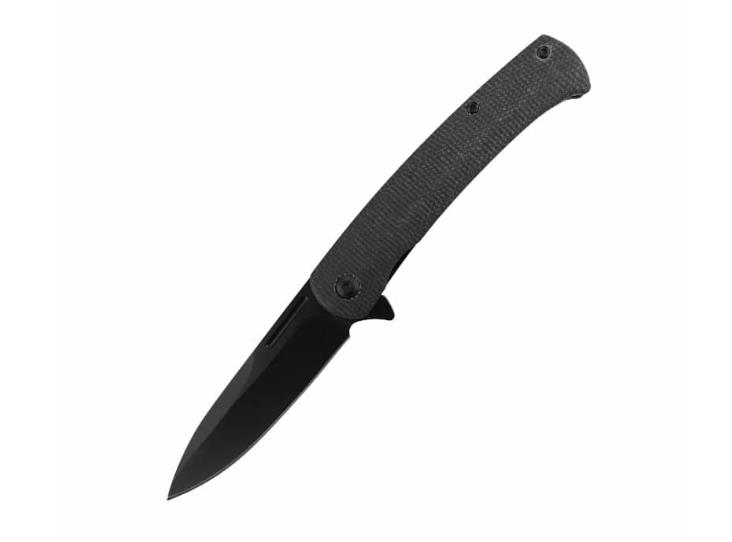
Strength and durability
Micarta is a popular choice for knife handles due to its impressive strength and durability. Its Composition creates an incredibly durable and robust handle material. You can rely on Micarta for long-lasting performance, even under heavy use.
Buy Wholesale Pocket Knives and Start Scaling up with Us Today
Contact us and connect with a sales rep to get a free quote.
Water resistance
Micarta is not the best material to resist water. It has a stable resistance to water absorption but is not as efficient as G10. That being said, you do not need to worry about it swell or warp anytime soon.
Texture and appearance
The texture and appearance of Micarta can vary based on the materials used and the manufacturing process. Generally, Micarta has a smooth, matte finish, providing a secure and comfortable grip during use.
Micarta advantages and disadvantages
Advantages
- Durability: Micarta is made from layers of fibers bonded with resin, making it strong and resistant to wear.
- Grip: Micarta provides a good grip, even when wet, due to its textured surface.
Disadvantages
- Price: Micarta tends to be more expensive than other handle materials like G10.
- Maintenance: Over time, the textured surface may wear down, reducing its grip. Additionally, Micarta can be susceptible to staining and may require occasional maintenance to maintain its appearance.
Properties of G10
G10 is a composite material consisting of layers of fiberglass cloth soaked in epoxy resin, which is compressed and heated. Known for its high strength and lightweight properties, G10 is a favored choice in the knife industry. Resistant to moisture, chemicals, and temperature variations, G10 handles require little maintenance while maintaining their aesthetics and performance. The textured surface of G10 offers a secure grip even in wet conditions.
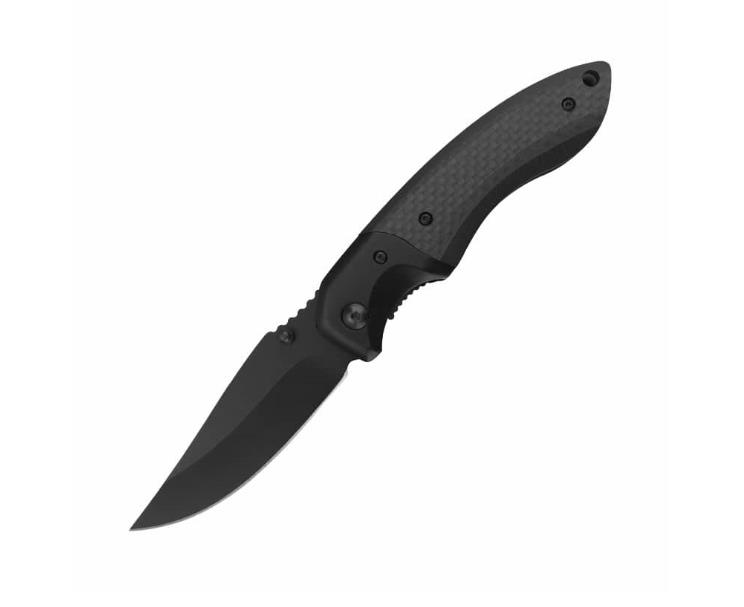
Strength and durability
G10 material is known for its impressive strength and durability. It is a high-pressure fiberglass laminate composed of epoxy resin and woven glass fiber bundles, which contributes to its tough nature. On the Rockwell Hardness M Scale, G10 typically scores around 110, making it incredibly resistant to wear, impact, and abrasion. As a knife handle, your G10 will easily withstand everyday use and last for a long time.
Water resistance
Another advantage of G10 is its excellent water resistance. Thanks to its structure, this material does not absorb water and remains unaffected by humidity or other harsh environmental conditions. This means your G10 knife handle can be used in wet or damp environments without fear of warping, swelling, or becoming slippery, ensuring a secure grip at all times.
Texture and appearance
The texture of G10 is another important aspect to think about. G10 material can be easily textured to provide a slip-resistant grip, making it perfect for knife handles that require a secure hold. This textured surface ensures that the handle remains comfortable in your hand, even during extended use.
Appearance-wise, G10 is available in a wide range of colors, allowing you to choose a desired aesthetic for your knife handle. Whether you prefer a subtle, understated look or something bold and eye-catching, there is a G10 material to suit your style.
G10 advantages and disadvantages
Advantages
- Moisture resistance: G10 is incredibly resistant to water.
- Color variety: G10 comes in a wider variety of colors and vibrant patterns than Micarta.
Disadvantages
- Grip: While G10 has a decent grip, it may not provide as strong or as comfortable a grip as Micarta.
- Synthetic material: Some customers may be put off by the fact that G10 is made from synthetic material.
Weight: G10 is slightly heavier than Micarta, which might be a concern for some users who prefer lighter knives.
G10 vs Micarta: choosing the right material
Even though G10 and Micarta share many similarities between them, there ARE nuances that require a keen eye to notice.
Water resistance
In dry conditions, both Micarta and G10 knife handles perform well. Micarta, with its layered construction and resin-based material, provides a durable and comfortable grip that retains its traction even when dusty or dirty. G10, on the other hand, is made from fiberglass and epoxy resin, resulting in a lighter handle with excellent strength and resistance to wear.
When it comes to wet conditions, the differences between Micarta and G10 become clearer. Micarta tends to absorb water, which can result in a slightly slippery grip. However, it is crucial to note that this absorption is minimal and does not affect the overall performance of the handle.
G10, being a non-porous material, will not absorb water. Its textured surface allows for a better grip even when wet. Some users also claim that G10 offers a slightly improved grip compared to Micarta, mainly in wet conditions.
Appearance and aesthetics
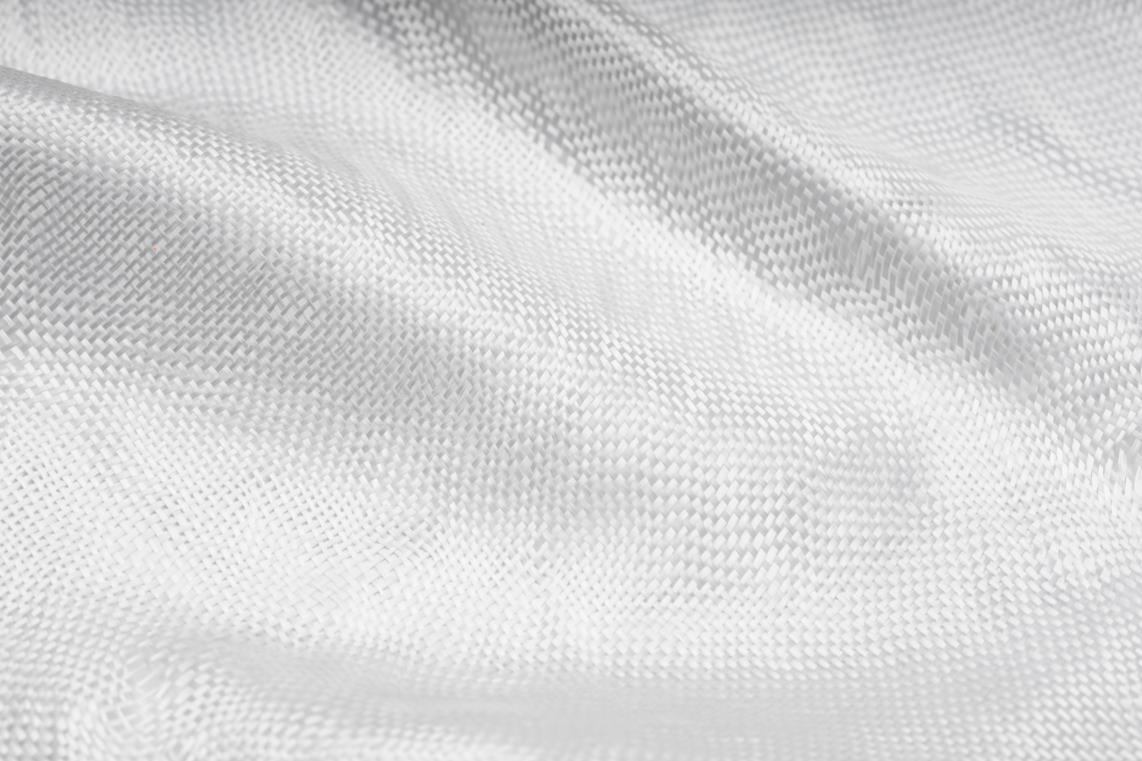
Micarta comes in various colors and patterns, but the options might not be as diverse as those of G10. The appearance of Micarta often showcases a more organic look, with layers of linen, paper, or canvas visible in the material. This gives Micarta handles a unique, textured appearance that many enthusiasts appreciate. The colors available for Micarta tend to be more muted, including shades of brown, black, and green.
G10 is a type of fiberglass laminate that is available in a wider range of vibrant colors and patterns than Micarta. You can find G10 knife handles in various shades, from bright or neon colors to more subdued and natural ones. In addition to solid colors, G10 is also available in multicolored layers, allowing for intricate and eye-catching designs.
Both Micarta and G10 materials exhibit durability and resistance to wear even with daily use, maintaining their appearance for an extended period. However, Micarta tends to develop a patina over time, giving the knife handle a unique, aged look. This patina is often embraced by knife enthusiasts, as it enhances the knife’s character. On the contrary, G10 preserves its color and pattern for much longer, ensuring consistent aesthetics throughout its lifetime.
In summary, Micarta offers a more organic and textured appearance, while G10 provides a modern, sleek look with a wider range of colors and patterns. Consider these visual differences and your personal preferences when deciding between Micarta and G10 knife handles.
Price
When comparing the prices of Micarta and G10 knife handles, you will find that both materials are available at various price points.
Micarta can be more expensive than G10 because of its labor-intensive manufacturing process. G10 is made by compressing layers of fiberglass and epoxy resin under high pressure and heat. This process is less time-consuming and labor-intensive, resulting in a lower production cost.
To get a clearer idea of price differences, consider that:
- Budget knives with G10 handles can be found for as low as $20 to $50, while Micarta-handled knives in this range are less common.
- In the mid-range price bracket, G10-handled knives generally range from $50 to $150, and Micarta-handled knives start at around $80 and can go up to $200.
- For high-end knives, Micarta handles are more prevalent, with prices starting at $200 and going up to $500 or more. G10-handled knives in this category are also available but may come with additional features that justify the higher price tag.
Keep in mind that while the handle material is an essential factor in determining the price, other components and factors, such as the blade material, craftsmanship, and brand reputation, will also influence the overall cost of the knife.
Weight and maintenance
G10 handles are relatively more lightweight compared to Micarta. When it comes to maintenance, both handle materials are relatively low-maintenance, but there are some differences. Micarta is a porous material, which means it can absorb oils and dirt over time, leading to staining and, in some cases, a reduction in grip. To maintain your Micarta handle, it’s necessary to clean the handle periodically using a gentle soap and water solution, followed by thorough drying.
A comparison table
| Feature | G10 | Micarta |
| Composition | Fiberglass and epoxy resin | Layers of linen, canvas, or paper and resin |
| Durability | Durable and resistant to wear | Slightly more durable and resistant to wear |
| Weight | Lightweight | Slightly heavier than G10 |
| Grip | Textured finish for a secure grip | Natural smooth grip |
| Water Resistance | Highly resistant to water and chemicals | Resistant to water and chemicals |
| Aesthetics | Offers various color and texture options | Has a rustic, organic appearance |
| Price | Generally more affordable than Micarta | Can be a bit pricier than G10 |
Buy Wholesale Pocket Knives and Start Scaling up with Us Today
Contact us and connect with a sales rep to get a free quote.
What kind of handle should you invest in for your knives?
When selecting the appropriate handle for your knife, it is essential to consider both functionality and aesthetics. Two popular materials for knife handles are Micarta and G10. Each offers unique properties that may suit your specific needs.
Both G10 and Micarta are excellent choices for knife handles, offering durability, grip, and style. Ultimately, your decision comes down to which material best fits your preferences and requirements. To make the most informed choice, weigh the pros and cons listed in the comparison table and consider the environment in which you’ll be using your knife.
Conclusion
In the end, both Micarta and G10 knife handles offer excellent performance and durability for your knife. You can be assured that both materials are strong, lightweight, and resistant to heat, cold, and moisture.
Even though there are differences between them, it’s not by a significant margin. The determining factor in your final decision between the two synthetic handle materials largely depends on what your customers want.
We hope this article helps demystify some confusion around the two materials. If you wish to learn more about knife handles, we gathered an ultimate guide for that. If you are looking to invest in quality knives now, don’t hesitate to contact us! We will get right back to you within 48 hours.
